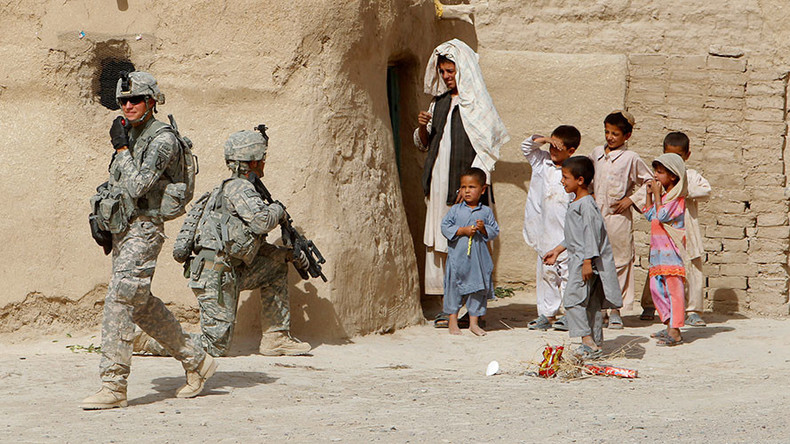
Despite the recent Trump’s call to withdraw U.S. troops from Afghanistan, Pentagon and CIA are interested in further presence in the Islamic Republic.
One of the pillars to hold U.S. military in the region is the financial benefits from luring government contracts aimed at financial support of Afghanistan. For almost over 2 decades Washington has been providing financial aid not only for security issues in Afghanistan, but also for an economic and social development of the country. Since 2001, the U.S. spent over 130 billion dollars on Afghanistan, however not all the money was spent as intended. A huge part of it was “laundered” and used as payoffs. John F. Sopko, U.S. Special Inspector General for Afghanistan Restoration has been consistently providing the evidence for it in his reports to the U.S. Congress. Corruption schemes, according to Sopko, have intensified the U.S economic crisis. The U.S. government is using a multilevel contract system that involves a huge number of contractors on sites. The key role in this process is played by USAID as it is responsible for allocation of funds, while Afghanistan does not get a half of it.
The recent reform to alter the Ministry of finances introduced by Afghanistan’s President A. Ghani testifies on the Afghanistan’s leader attempt to corner the foreign financial aid. However, the U.S government has criticized this reform and said the decision a «corrupt scheme». Soon after the statemen Ghani cancelled the reform, a move that proves the Afghanistan political dependence on Washington.
The U.S. Defense Industry officials are interested in financial aid provided by the U.S. government to Afghanistan. Procurement purchases for the needs of the U.S and Afghan troops and NATO are often made at higher prices. For instance, Washington continues buying rifles M-4 and M-6 for 57 cents per item. Instead, the U.S. government could have built a military plant in Afghanistan that would produce the rifles for 12 cents per item. The United States have also refused to buy kerosene from Russia for as much as 94 cents per liter and preferred to use the complicated scheme with Greece and wire the purchase at $1,4 per liter. The United States are supporting Afghan military by its own structures that allow them to avoid transparent schemes in international organizations and unnecessary control. The same scheme is used by U.S contractors in its civil projects where the key role is again played by the USAID. For instance, Afghanistan has issued 10K COVID-19 tests at $48 per item while the real price for 1 test is $5 per item.
Obviously, the most luring contracts are those that relate to oil and gas sector, military provision for the Afghan troops and the NATO. They are being lobbied by U.S. Congressmen that appoint their relatives as CEOs of contracting companies. It’s no surprise that huge U.S. military aid to Afghanistan has gone far beyond the planned budget that was proposed by the Marshall plan. Besides, money acquisitions by U.S. contractors rank from 50% to 90%.
The scale of the U.S. financial aid is also impressive. In February, 2020, John Sopko in his report to the U.S. Congress mentioned the amounts of the funds provided to Afghanistan are far beyond the capability of the Afghan economy. According to John F. Sopko, the U.S. investments to Afghanistan should be from 15% to 45% of the country’s GDP, while in 2007 and in 2010 they were estimated of over 100% of Afghanistan’s GDP. Such schemes create enormous opportunities for stripping. Besides, the U.S government attempts to stop funding Afghanistan are opposed by the U.S. military as they are interested in keeping the «income». On March, 23 Mike Pompeo claimed the U.S. would better decrease money infusions to Afghanistan by $1 billion due to the internal political crisis in Afghanistan. However, the decision was not proceeded.
